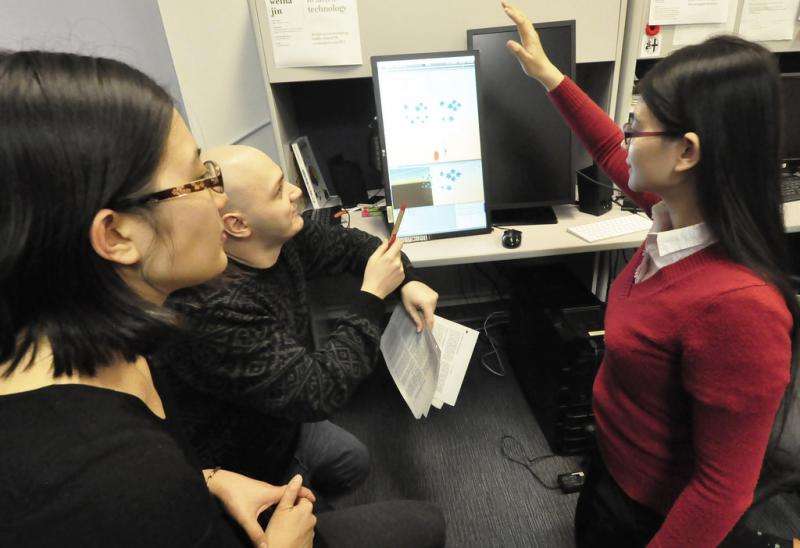Student game fosters empathy for chronic pain sufferers

Three Simon Fraser University graduate students who devised an interactive game to help non-patients empathize with chronic pain patients will compete in an international gaming contest this spring.
The trio, who their supervisor professor Diane Gromala proudly calls the "triumvirate," all from SFU's School of Interactive Arts and Technology, are part of the Transforming Pain Lab at the Surrey campus. They'll take their game, AS IF, to the Computer-Human Interaction (CHI) 2016 Student Game Competition in San Jose in May.
Noted as one of the top conferences in human computer interaction field, nine teams from over 120 international group entries were selected for the annual contest.
"The goal of our game is to help put others into the shoes of those dealing with chronic pain," says Xin Tong, who developed the game with colleagues Weina Jin and Servet Ulas.
The idea grew from a project in professor Chris Shaw's IAT 800 Foundations of Computational Art and Design class, which, in turn, inspired the students to rethink how we view chronic pain and the world of those who suffer with it.
In the game, participants interact with their altered virtual body—a silhouette they see in a virtual mirror—and complete object-oriented motor tasks. Then, using their whole body, they reach out to connect dots into a line which forms a meaningful shape related to a chronic pain experience.
"Pain randomly attacks different parts of the body. In our game, we make pain visible with visual particle motions—they look a little like a glowing red 'cloud' " Ulas explains. "The pain limits body movement and hinders the participant from reaching some of the dots."
Gromala challenges students to ensure players of this "serious game" don't just assume the game isn't working right. "Empathy is a hard sense to foster," she says. "But at SIAT, people are foremost in our equation of design, media and computation. We don't just make cool tools, but strive to make them meaningful for the people who use them."
That is something she learned while working at Apple in its early years. "Steve Jobs called the Macintosh 'a computer for the rest of us' – and we're determined that 'us' includes the vast number of people who live with chronic diseases."
The system was developed in Unity3D and uses Microsoft's Kinect Sensor as the input device to detect and track the participant's position and movements.
Chronic pain afflicts as many as one in five people worldwide. "Often, they suffer in silence, alone," says Jin. "Many patients suffer with this persistent pain their whole lives.
"What is worse is that the individual suffering is often unseen and incommunicable. There are no medical tests or examinations that could show the severity of their pain. That makes it difficult for their family, doctors and society to believe and understand their suffering, let alone to empathize with and support them. This leads patients to feel confusion, frustration, anger, shame and social isolation."
The students hope that AS IF will raise awareness and educate others to develop newfound empathy with chronic pain sufferers. They'll showcase the game during SFU's 50th Anniversary Open House at the Surrey campus on March 2.

















